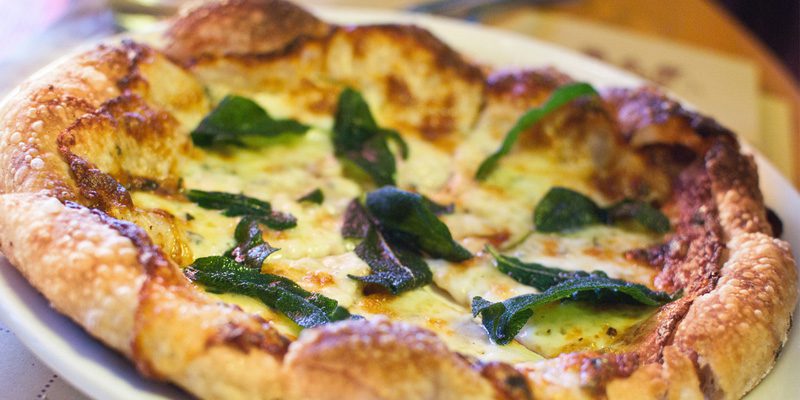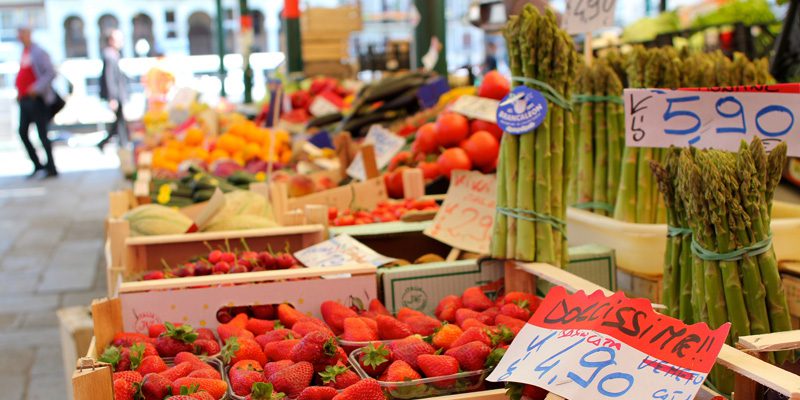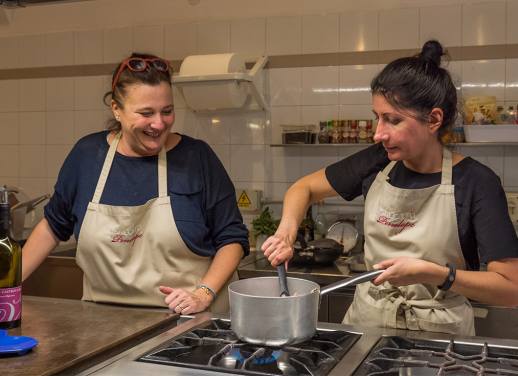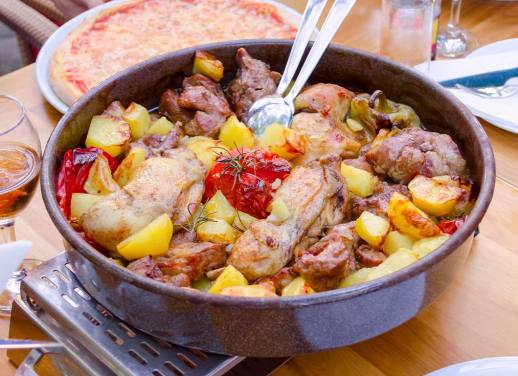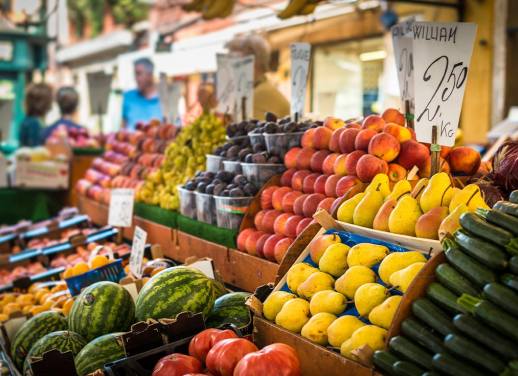When cookbook author Tessa Kiros turned 18 she left home in South Africa to travel and learn more about the world. She spent her twenties working in different restaurants and with families in London, Sydney, Mexico and Athens, finding mentors to lead her through the twisting paths of global gastronomy.
She’s a collector of many things. Food. People. Colour. Smells. Details. Different cultures and traditions. Why they do what they do and how they put their dishes together. How people, families and nations connect. This diversity is reflected in her food, and although Italian cuisine is her most famous speciality, her dishes reflect her past, with Finnish, Greek and South African influences creeping in occasionally.
We sat down with Tessa and asked her to share a few Italian food tips with us.

Tessa Kiros | Image c/o Manos Chatzikonstantis, Flickr
1. Your very first cookbook, ‘Twelve’, speaks to your great love of Tuscany. When did you really fall for Italy and its food?
It was on one of my first trips to Italy, before I came to Tuscany. We were staying with a friend in France, just over the border. She decided to drive us to a little market in San Remo to get some produce for lunch. Somehow we ended up spending the day on a boat off the coast of the town of Alassio, and that night we dined in an ageing courtyard at a beautiful restaurant – in that casual style the Italians manage so well.
I remember the waiter bringing small tray after tray after tray of antipasti – mixed fish, fried and marinated, perfect small heaps of vegetables and more. The memory of the market that morning, the boat we had been on, the beauty that was hanging around everywhere – I was absolutely taken.
I don’t know what time we drove back into France that night, and I don’t know what happened to our bag of produce from the market, but I know that this was one of the best days I ever had and that I will remember it forever.
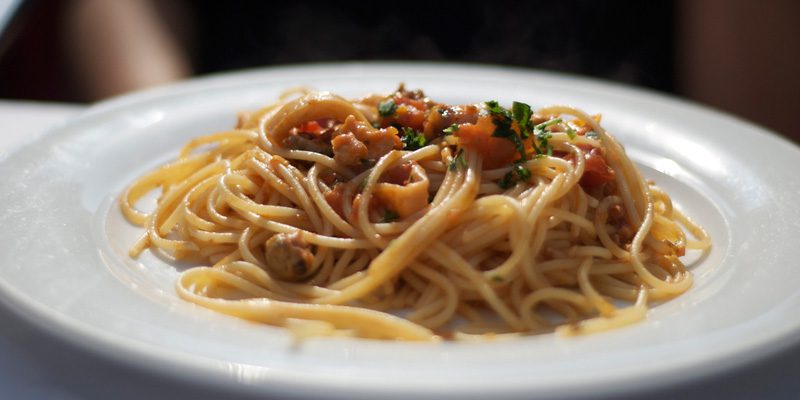
Bigoli with seafood. Credit Jason Crane, Flickr
2. You have dedicated two of your books to food, wine and travel tales through Venezia. What are your favourite flavours/ingredients/dishes from this region?
- The seafood risottos, definitely
- A beautiful pasticcio or lasagne di pesce
- Fritto misto di pesce (mixed fried seafood)
- Grigliata mista di pesce (mixed seafood grill)
- Bigoli – a whole-wheat thick spaghetti often served with a sauce of onions and anchovies melted together in the pan
- Polenta with sausages in winter, with a side dish of radicchio and anchovy
- Mozzarella in carozza – you’ll find it in some of the older bars and cafes in Venice, served freshly cooked and hot.
- Focaccia Veneziana – a not too sweet cakey-bread especially prevalent at Easter
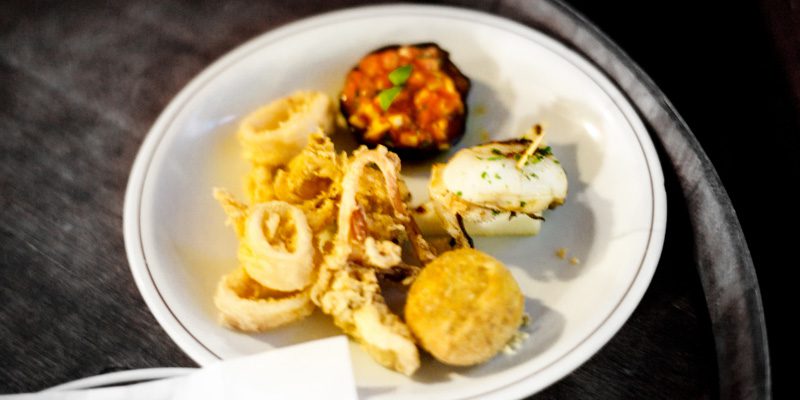
Cicchetti at the Bacaro da Fiore, Venice. Credit Sacha 2D, Flickr
3. What is so special about the cicchetti culture of Venice, and what is your favourite aperitivo?
The cicchetti culture of Venice is a beautiful one. It is special in that it needs no announcement. Even though it’s more usual before lunch or dinner, there is no real set time when you can take an aperitivo and a cicchetto. It can be just one meatball if you like, or you can continue with a couple of fried anchovies, as many sardines in saor as you like, and even flow on into a full blown banquet (my favourite). It is also a wonderful opportunity to suddenly take a break in your day, share a drink, a bite and a moment with someone. My favourite aperitivo is prosecco. I also appreciate Spritz.
4. When in Rome, what is your go-to dish?
I love to have a pizza rossa when I get to Rome. A thick base with only cooked tomato flavoured with olive oil, herbs, perhaps garlic. I have loved the simplicity and deliciousness of this for many years.
Another one is a warm piece of pizza bianca – white pizza with olive oil and coarse salt from Campo dei Fiori that is made in the mornings. Also, fried crisp fillets of baccala that can be taken to go and you can eat as you walk.
When is season, fried artichokes (carciofi alla Giudia), and a good sized portion of healthy-looking puntarelle greens, dressed with olive oil and anchovy. I love the way side dishes of cooked vegetables are visible in many restaurants in big bowls, it makes me want to order them straight away.
5. In an interview you wrote, ‘Going to a market in a foreign country is a chance to see culture in action, the life of the people.’ Our Real Food Adventure Italy concludes in the Rialto markets in Venice. Could you describe the significance of this market to the local Venetians and some of the sights, smells and sounds you might find there?
A wonderful and vast selection of fresh seafood is obviously available everywhere, along with the possibility of getting things like crab, razor clams, all sizes of prawns, mussels, octopus, tiny fish and scallops (all of which will be turned into platters, soups and risottos later). Then there are eels and other challenging ingredients. There is such a change in seasonal vegetables ,especially summer fruits, wild asparagus and artichokes when in season. Tiny castraure and large ready-cleaned artichoke bottoms, floating in lovely buckets of water. Masterpiece radicchios.
It is wonderful to witness these natural, raw ingredients and possibilities by morning, surrounding you everywhere and then to find them transformed into the typical Venetian dishes later on. Such fresh ingredients, all to be bought under an open-sky and amongst the chattering and bantering of Venetian merchants surrounded by canals is a totally unique experience, especially around carnival time.
Want a double helping of la dolce vita? Check out our Real Food Adventure Italy

